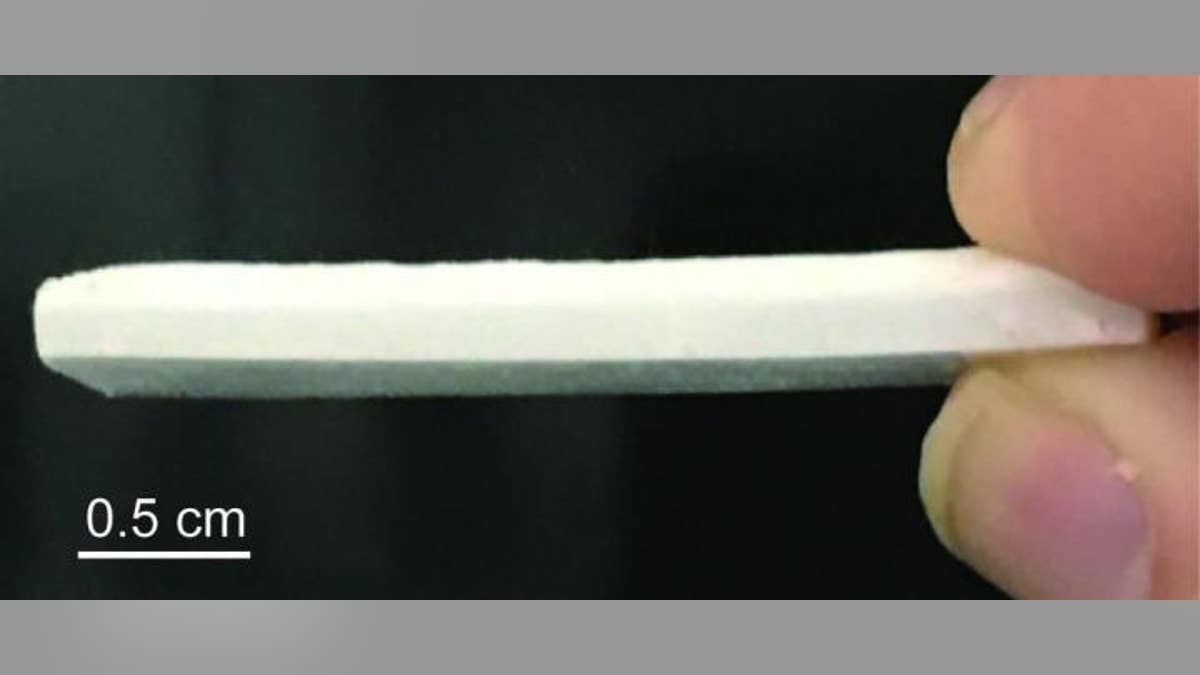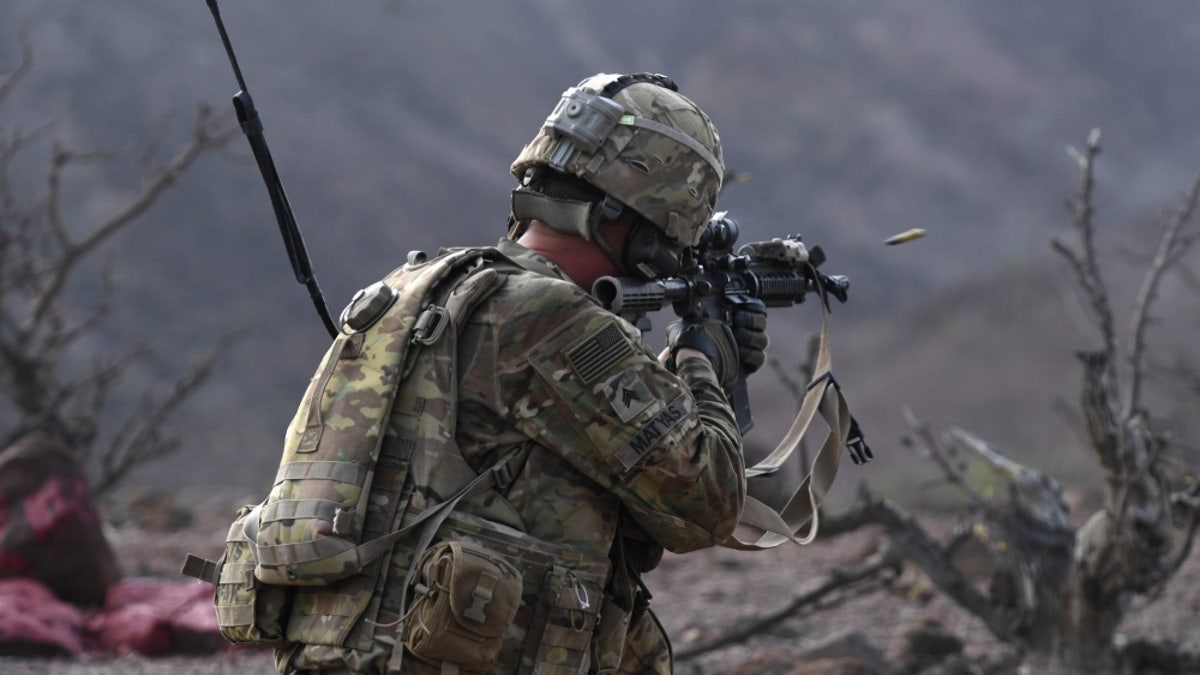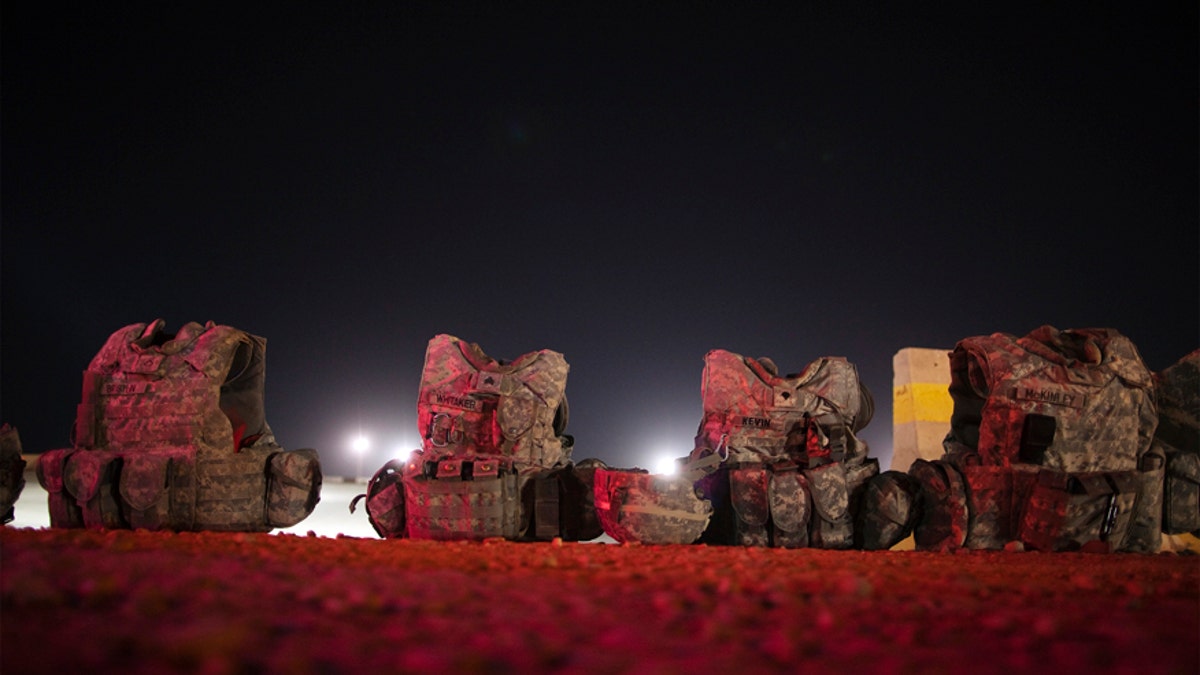Fox News Flash top headlines for Sept. 17
Fox News Flash top headlines for Sept. 17 are here. Check out what's clicking on Foxnews.com
Could pearls help save a soldier’s life?
Scientists are looking at pearls in an innovative U.S. Army research project to bolster body armor.
Researchers at the University of Buffalo have simulated mother of pearl, or the outer coating of pearls, to create a lightweight plastic described as 14 times stronger and eight times lighter than steel. In a statement, the Army says that the material is “ideal for absorbing the impact of bullets and other projectiles.”
ARMY BUILDING NEW 'AMBIDEXTROUS' MULTI-PURPOSE GRENADE
The research, which is funded by the Army Research Office (ARO), is published in the journal ACS Applied Polymer Materials.

The new lightweight plastic is 14 times stronger and eight times lighter (less dense) than steel, researchers say. (University of Buffalo)
"The material is stiff, strong and tough," said Shenqiang Ren, Ph.D., a professor in the Department of Mechanical and Aerospace Engineering at Buffalo University and the paper's lead author, in the statement. "It could be applicable to vests, helmets and other types of body armor, as well as protective armor for ships, helicopters and other vehicles."
Ren is also a member of the University at Buffalo's RENEW (Research and Education in eNergy, Environment and Water) Institute.
MARINES 3D-PRINT CONCRETE BRIDGE IN 14 HOURS
Most of the material used is a “souped-up version of polyethylene,” according to the Army. This ultrahigh molecular weight polyethylene, or UHMWPE, is used for the likes of artificial hips and guitar picks.

File photo - A 10th Mountain Division Soldier fires an M4 rifle during a platoon Situational Training Exercise at a range in Arta, Djibouti, Aug. 25, 2018. (U.S. Air Force photo by Senior Airman Haley D. Phillips)
Researchers have studied the structure of mother of pearl, which is created by mollusks who arrange a form of calcium carbonate into something that “resembles interlocking bricks.”
“Like mother of pearl, the researchers designed the material to have an extremely tough outer shell with a more flexible inner backing that's capable of deforming and absorbing projectiles,” the Army said in its statement.
AIR FORCE BASE PRODUCES FIRST CERTIFIED 3D-PRINTED AIRCRAFT PARTS

File photo - Sets of U.S. body armor rest on the ground near Nasiriyah, Iraq Dec. 17, 2011. (REUTERS/Lucas Jackson/Pool)
"In contrast to steel or ceramic armor, UHMWPE could also be easier to cast or mold into complex shapes, providing versatile protection for soldiers, vehicles, and other Army assets,” said Evan Runnerstrom, Ph.D., program manager, materials design at ARO, in the statement.
CLICK HERE TO GET THE FOX NEWS APP
Silica nanoparticles have also been used to potentially create even stronger armor.
Follow James Rogers on Twitter @jamesjrogers

